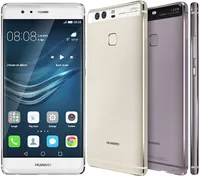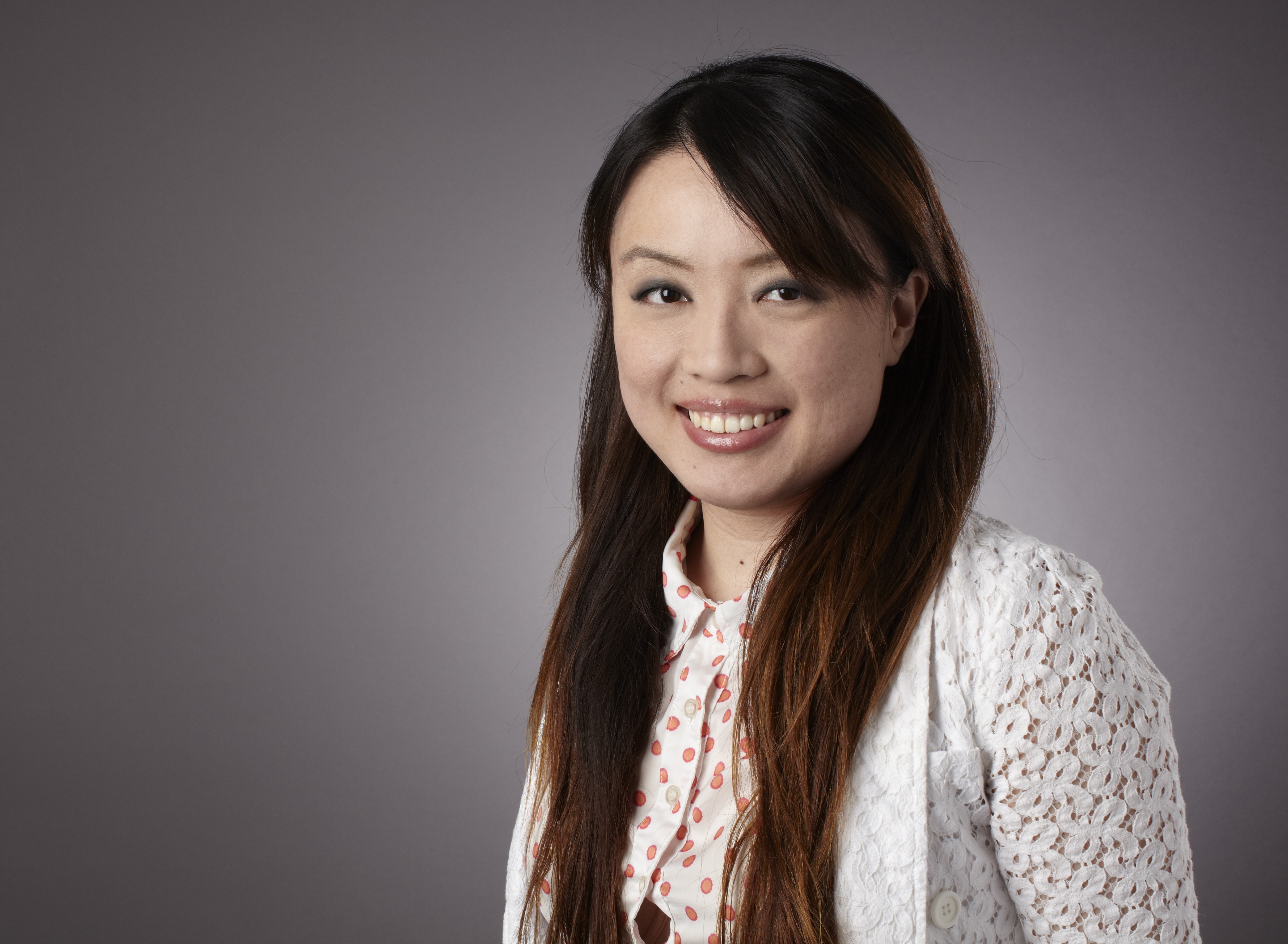Huawei P9 vs. Galaxy S7: Even a Leica Can't Beat Samsung
Huawei teamed up with a top-tier camera maker in Leica, but the resulting new P9 still can't beat the Galaxy S7's cameras.

Smartphone makers are getting really serious about cameras, with Samsung setting the tone with its unique dual-pixel sensors on the Galaxy S7 and S7 Edge. Huawei is taking on Samsung by teaming up with famed camera maker Leica on the Huawei P9, offering dual cameras for refocusing on your shot after the fact.
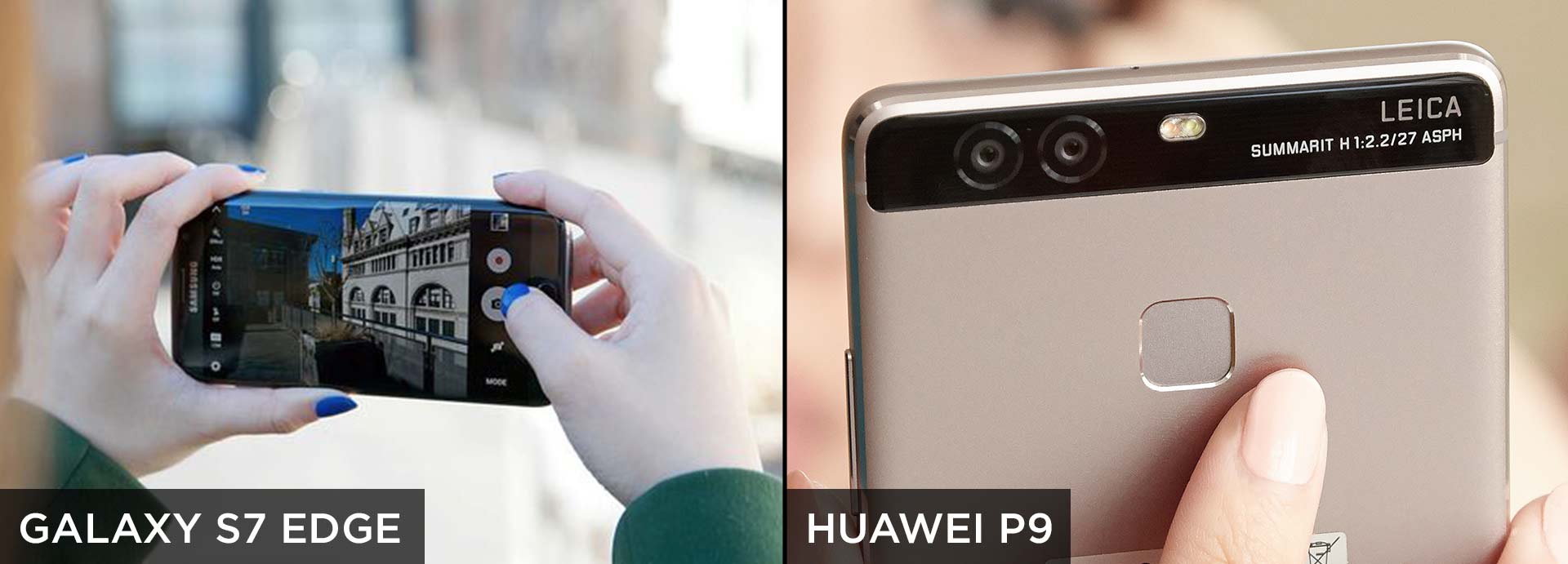
Is Leica's support (and co-engineering) enough to help Huawei steal Samsung’s crown as the camera-phone king? After putting the cameras on both phones through their paces, we believe the answer is a resounding no.
Methodology
We tested the cameras on both phones by taking shots in a variety of common scenarios in full auto mode and without tapping on the screen to select a point of focus or exposure. This lets the camera decide on its own what to focus on, reducing variation due to human interference. Each picture in the comparison was snapped within seconds of its counterpart.
MORE: Why the Galaxy S7 Is the New Camera Phone King
We compared images from both devices side by side on the same desktop monitor and analyzed the photos for color, clarity and exposure.
The Devices
Samsung's Galaxy S7 and S7 Edge sport dual-pixel, 12-megapixel sensors that have 1.4-micron sensors. Paired with a maximum lens aperture of f/1.7, the new Samsung flagships let in about 95 percent more light than did their predecessors. The new dual-pixel sensors offer faster autofocus as well, great for capturing active subjects. Up front, Samsung's 5-MP selfie-shooters rock apertures of f/1.7. For our comparison, we used the Galaxy S7 Edge.
The Huawei P9's 12-MP camera rocks two f/2.2 lenses and 1.25-micron pixels, one capturing color information while the other records monochrome detail. Together, that dual-lens setup promises rich colors and great clarity, as well as a large pixel size equivalent to 1.76 microns, Huawei said. The P9's 8-MP selfie cam has a maximum aperture of f/2.4.
Get instant access to breaking news, the hottest reviews, great deals and helpful tips.
Round 1: Daylight landscape
I shot the Manhattan skyline from my 36th-floor balcony with both phones, and it was tough to pick a winner. Both cameras delivered rich details and great colors, but the Galaxy S7 produced deeper blue sky, better contrast and sharper lines in distant buildings, so it won in the end.

WINNER: Galaxy S7 Edge. The two phones delivered nearly identical pics in daylight, but the Galaxy's deeper colors and higher contrast made for more pleasant shots.
Round 2: Close-up food
Hate all you want, but food photography is a delicious treat for both your stomach and your eyes. Pictures of mouthwatering cuisine are a great test to see how a camera handles colors, textures and details. My tantalizing breakfast appeared bright and appetizing in the Galaxy's shot, but looked more like green eggs and bleah in the Huawei's image.
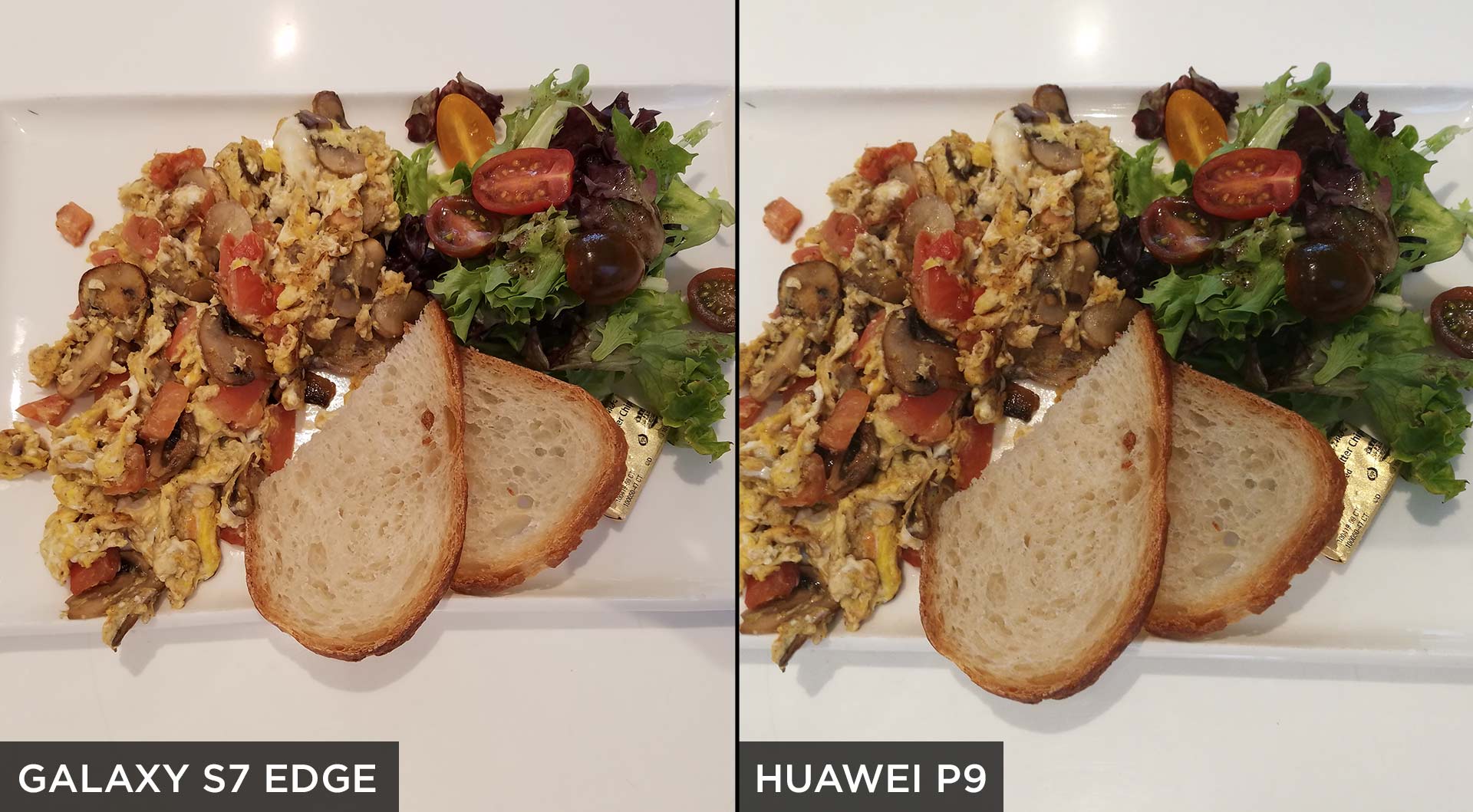
Huawei's camera looked to have more-accurate white balance compared to Samsung's slightly reddish pic. But the P9 cast a green tinge over my food. Huawei's picture also lacked the clarity found in the Galaxy S7's photo.
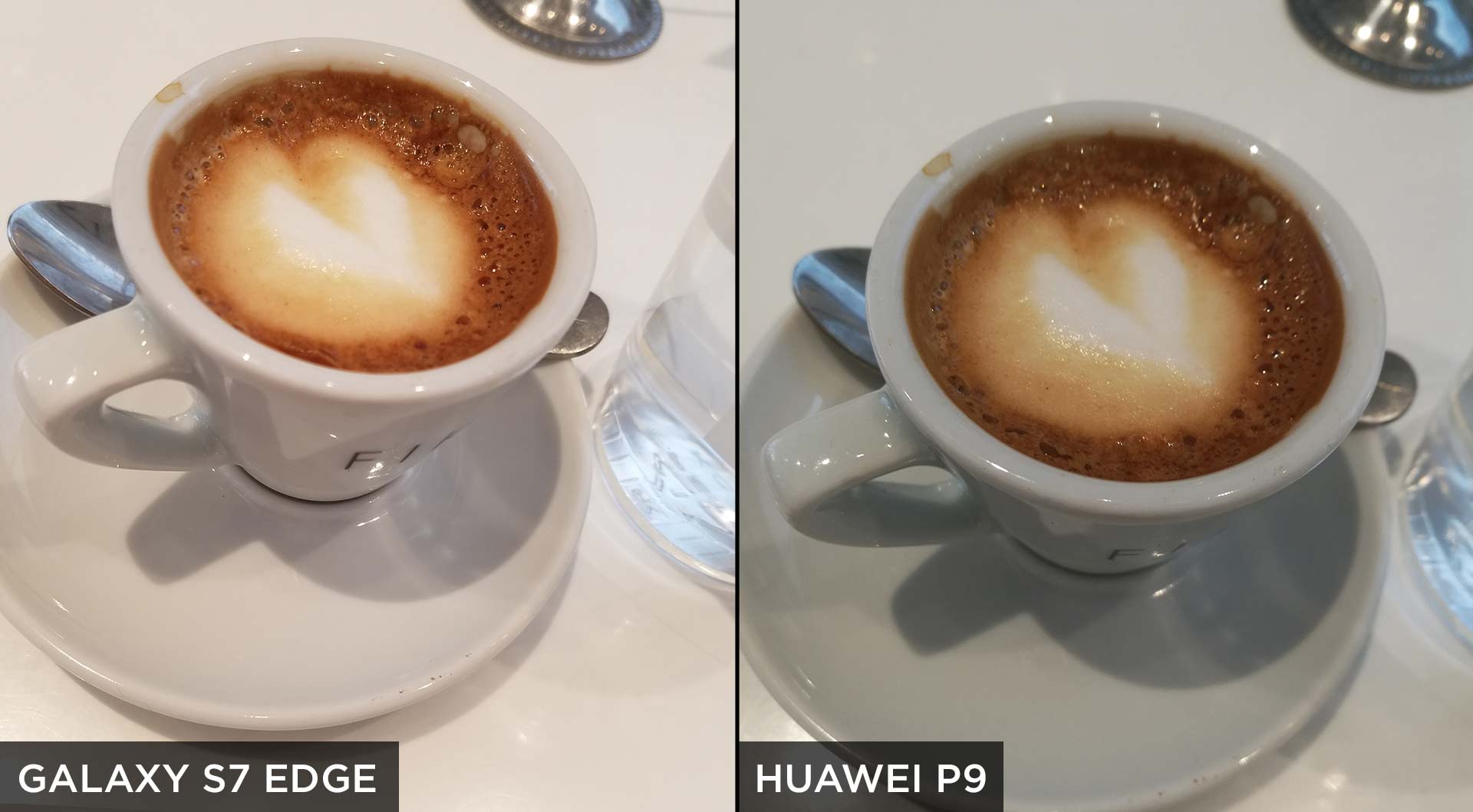
The Huawei P9's pictures were also consistently darker than the Galaxy S7's, as shown by these photos of a cup of frothy macchiato.
WINNER: Galaxy S7. Despite a rosy tinge that results in somewhat inaccurate colors, the Galaxy S7 Edge's warmer colors and clearer details secured it the win in this round.
Round 3: Daytime portrait
When your squad gets together for shenanigans, your camera needs to do a good job capturing all the beautiful memories. I got my girls together for a group shot on our roof, and had a tough time picking the better phone camera.

Although Samsung and Huawei both delivered solid exposure for the scene, with nearly identical colors, the Galaxy S7's picture was far sharper than the Huawei P9's. My colleague's lovely blonde hair looked like a mottled mess on the Huawei's image, while every strand was tack-sharp on the Galaxy's.
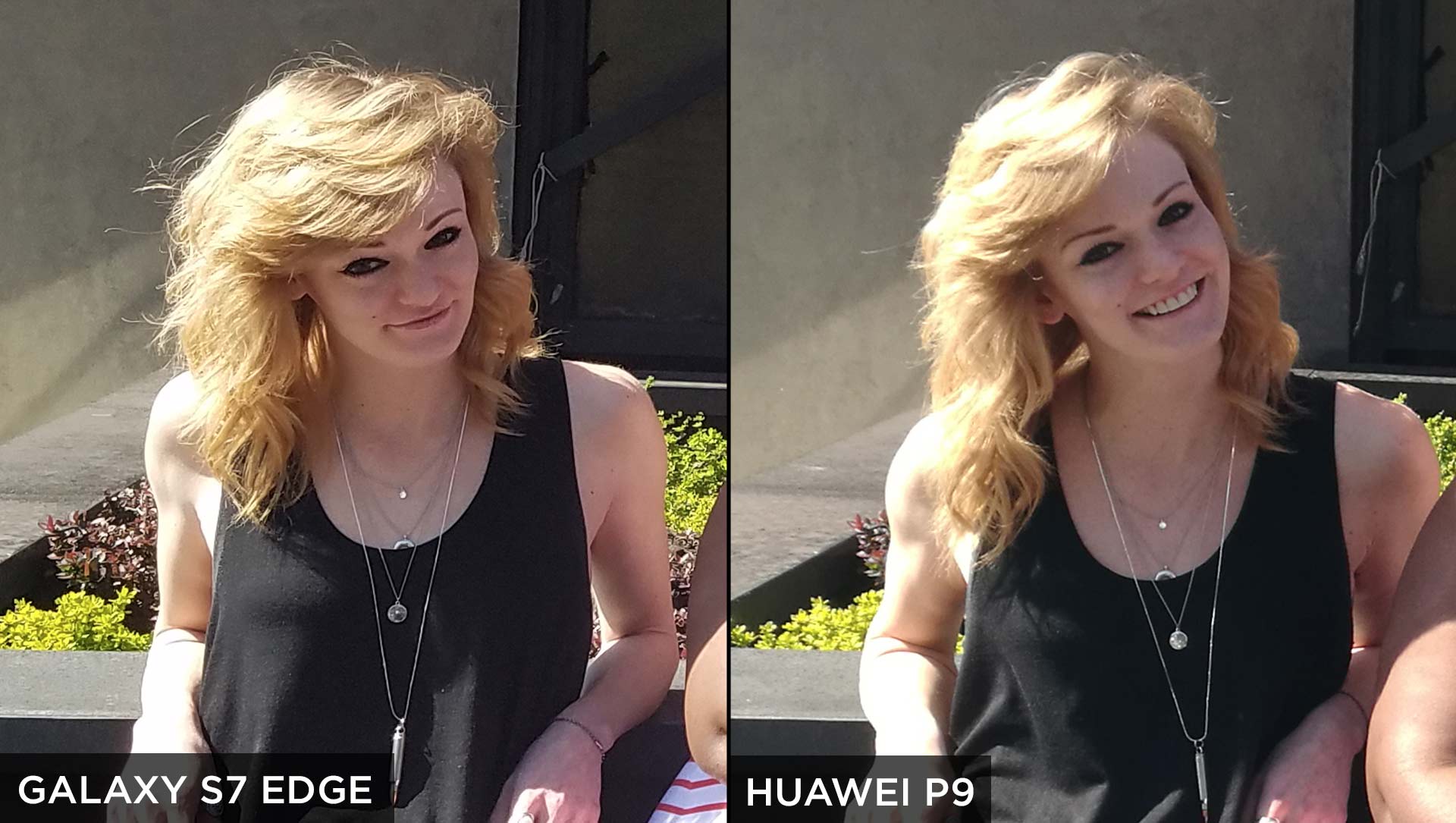
WINNER: Galaxy S7. Samsung's superior clarity beat Huawei in this round.
Round 4: Low light
Samsung continued to hog the limelight once the light fell, delivering crisper details and an overall brighter picture than Huawei's camera did.
Objects in the shadows, such as the rooftops of shorter buildings, were brighter and clearer in the Galaxy's shot, but are shrouded in darkness in the Huawei P9's.

Similarly, the Galaxy S7 Edge captured a much brighter shot, taken in near darkness, of my homemade dinner than did the Huawei P9.

With flash activated, both phones did a good job capturing the chili flakes and individual grains of quinoa on the dish. Samsung had crisper details again, while Huawei's picture looked soft. However, Huawei's phone uses a more neutral flash that made colors more accurate, while Samsung's lights had a blue tone.
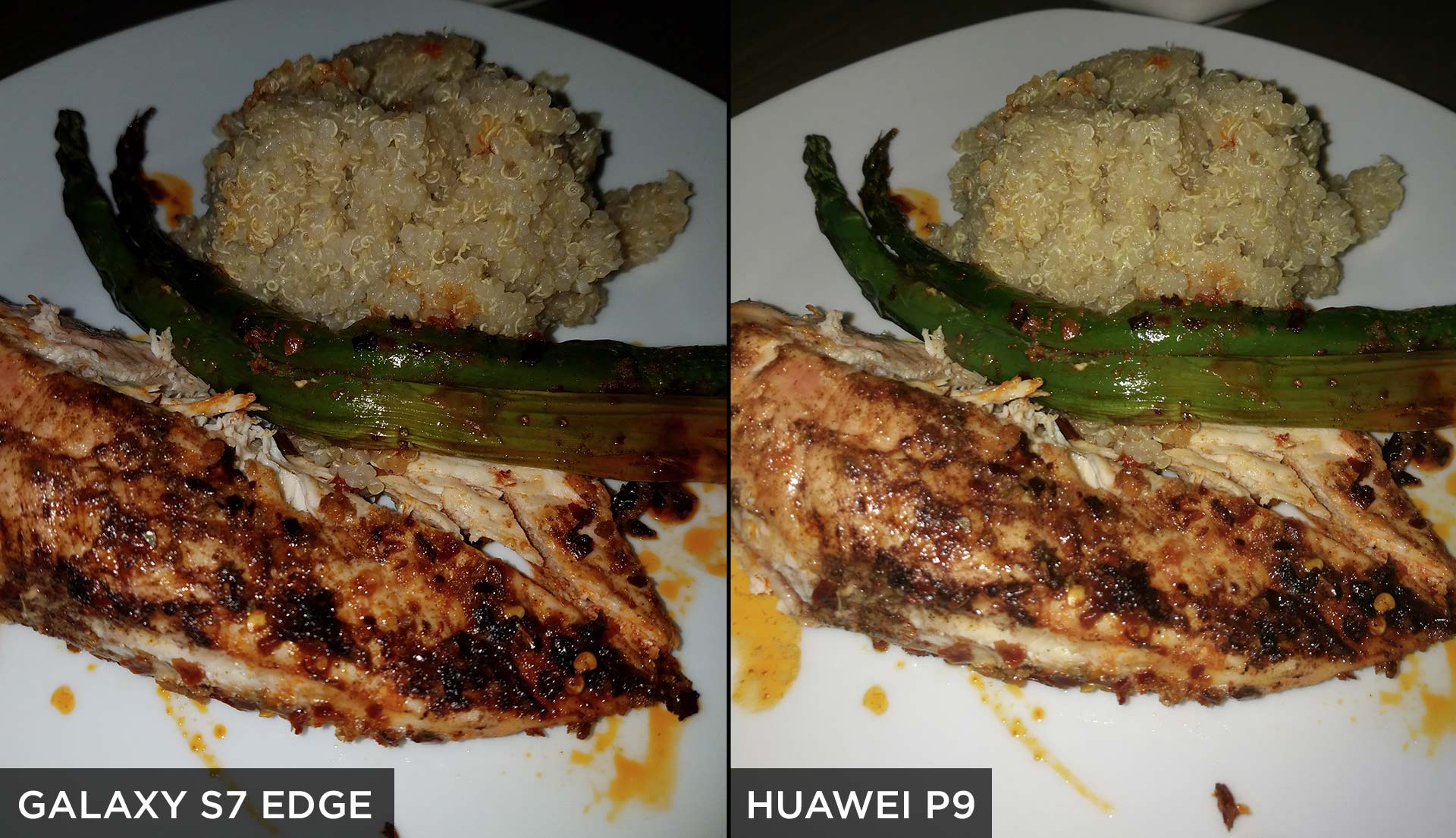
WINNER: Galaxy S7 Edge. Samsung's brighter pictures in low light retain more details and colors.
Round 5: Selfie
Although the Huawei flagship has a sharper, 8-megapixel front cam compared to the 5-MP model on the front of the Galaxy S7, the P9 still lost to the Samsung device on clarity. I turned off Beauty mode in both phones to reduce blur that could be caused by software, and my hair looked sharper on the Samsung's pics.
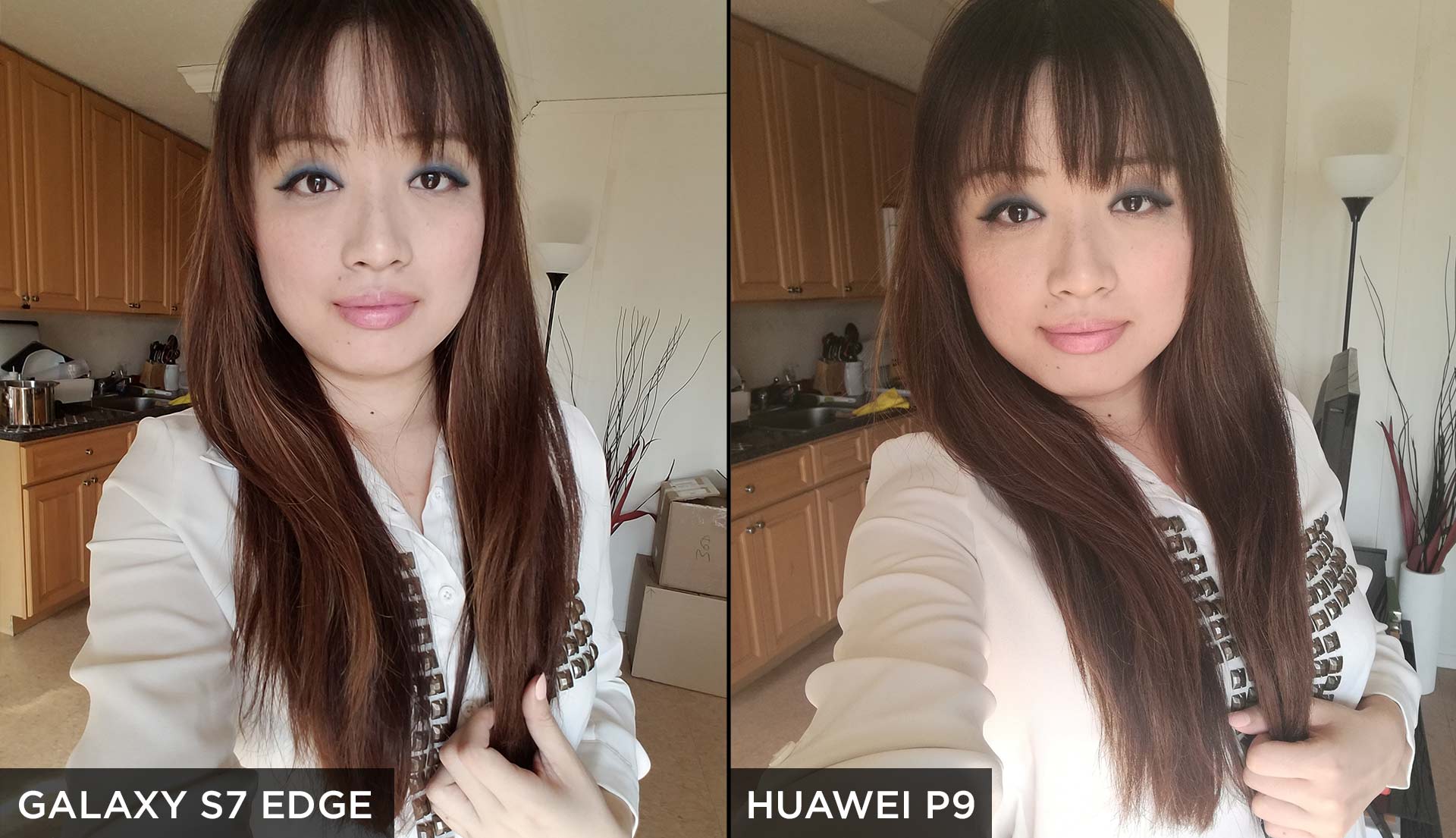
Huawei did deliver warmer, more-realistic colors than Samsung did, with the S7 Edge's camera washing me out and making me look too pale. My hair was a more accurate shade of brown in the Huawei P9 shot, while it appeared too red in the Samsung version.
To keep the party going even in pitch-black darkness, both phones offer selfie-flash features that brighten your visage by lighting up the display. Samsung's flash was much stronger and made me look pale; the Huawei flash cast a green tinge over the image, although it kept my skin tone more natural.
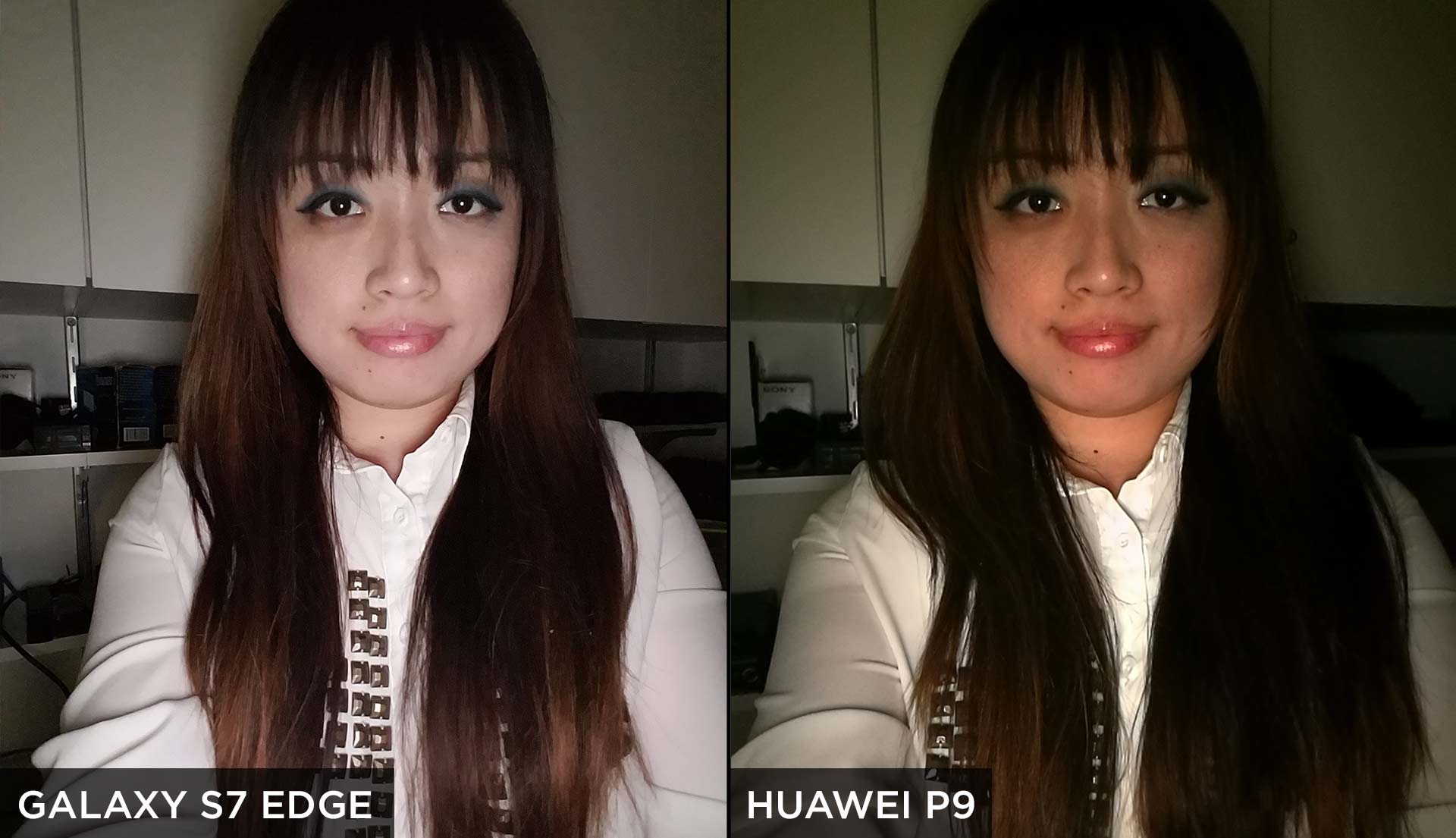
WINNER: Galaxy S7 Edge. With greater clarity and more vibrant colors, Samsung takes this round.
Round 6: Special features
Leica is well-known for its cool All-Focus feature that lets you refocus your shot after you save it, and the Huawei P9 offers this tool as well. I snapped a close-up shot of my breakfast in Aperture mode, then went into the Gallery app to tweak the photo. I could tap anywhere in the picture to select that spot as a new focal point, and adjust the aperture size (which determines how shallow the focus would be).
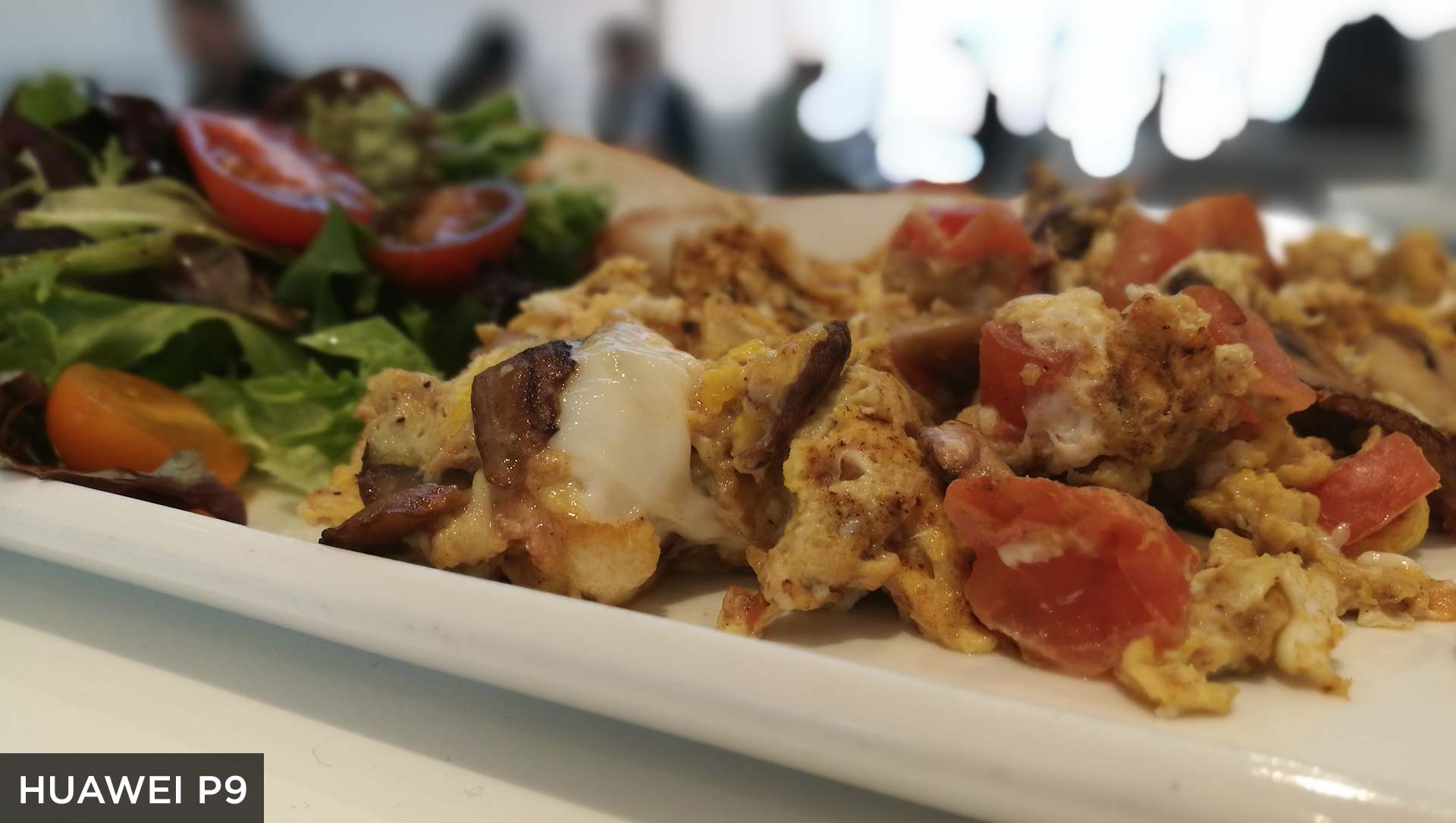
Samsung offers a similar function, called Selective Focus. However, with this feature, instead of picking anywhere in your picture as the focal point, you can only select near, far or all focus. In general, this tool worked well, but trying to snap a picture in Selective Focus mode is very tricky. You have to be a specific distance from your subject and hold very still while you take the shot, or the feature won't work.
Although Huawei's option is more flexible and easier to use, it doesn't work as well as I had hoped. Tapping on the background of my images shifted focus slightly, but the background often remained blurry. However, when it does work, Huawei's All-Focus is darn near magical.
Both the P9 and Galaxy S7 offer voice- and smile-detect triggers, physical-key shortcuts for launching the cameras, object-tracking, Pro modes for manual camera controls, and selfie-enhancing tools. But only the Galaxy S7 lets you record live video directly to YouTube, create video collages and use a specific Food mode to make your meals look droolworthy.
Huawei's app also lacks options for Panorama, Slow Motion and Time Lapse modes, which the Galaxy provides.
WINNER: Galaxy S7 Edge. By sheer number and usefulness, the Galaxy S7's special features make the company's cameras even more powerful.
Bottom Line: Samsung reigns supreme
Despite a partnership with one of the biggest names in the optics industry, Huawei's cameras still trailed Samsung's. Taking all six rounds, the Galaxy S7 proved it still deserves its place on the smartphone camera throne.
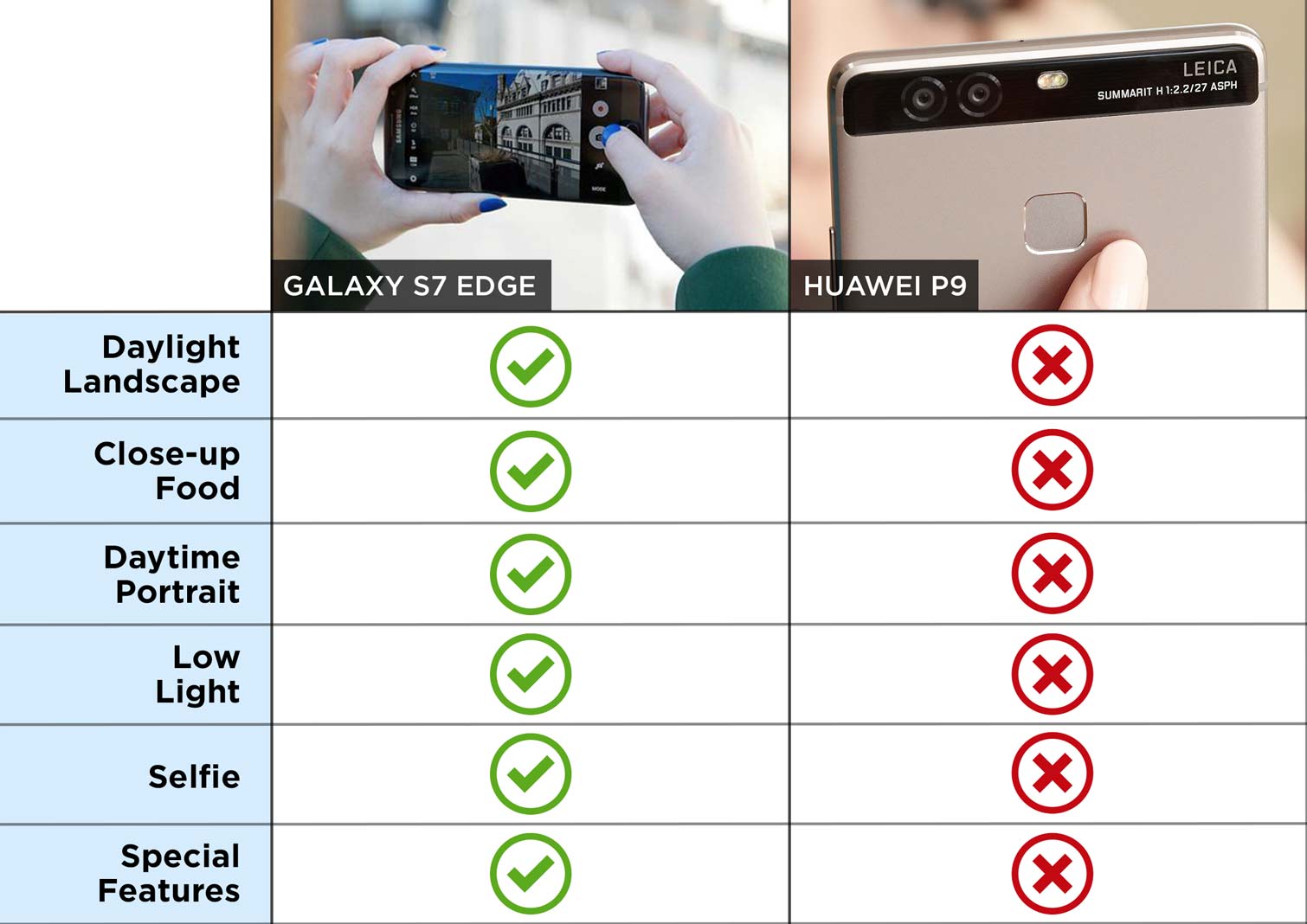
Although it lost, the Huawei P9 put up a good fight, nearly tying with Samsung in the daylight, portrait and selfie rounds. The phone's dual cameras offer great colors and clarity, comparable (at least from my early observations) to other leading cameras found on the iPhone 6s, the LG G5 and the HTC 10. The Leica partnership has improved Huawei's standing in smartphone photography, even if the company lost to the reigning champ.
Stay tuned for our full review of the Huawei P9 to see how it measures up overall as a phone.
Cherlynn is Deputy Editor, Reviews at Engadget and also leads the site's Google reporting. She graduated with a Master’s in Journalism from Columbia University before joining Tom's Guide and its sister site LaptopMag as a staff writer, where she covered wearables, cameras, laptops, computers and smartphones, among many other subjects.
-
Luke_44 The P9 does have a whole range of options including panorama and slow mo, if you swipe in from the left.Reply -
slick_ Appearantly you don't know much on photography or you are being well paid by Samsung to blemish the competition.Reply
The Huawai is much better especially to true to life colors which make an image beautiful.
On Samsung colors and sharpness are over processed which resulta in unnatural i,age. Sahrp and lively tough not natural hence not beautiful.
Same experience between plasma and LCD or expensive speakers vs cheap speakers.
You see an image, a picture on the Samsung, a representation of reality on the P9. -
kqafae The reviewer either doesn't know a thing about photography or is paid by Samsung, Samsung oversharpens while Huawei doesn't, some images taken with the S7 look horrendous cause of the oversharpening, the S7 also tends to produce unnatural colours while Huawei's colours are much more accurate+ true to life, the colours may look pleasing on the S7 but they are still inaccurate. Oversharpened photos with inaccurate colours doesn't mean it's better, not to mention the P9 clearly has better white balance and more dynamic range than the S7.Reply -
benmoran I have to agree with them that the P9 does take more natural photos than that of the S7 Edge. Though I find the exposure a bit disturbing here that the P9 seems to be darker from what I've seen in other comparisons. But let's see things go once more photos come available.Reply
https://versus.com/en/huawei-p9-vs-samsung-galaxy-s7-edge
Nothing against the S7 Edge here as I am a fan of both phones & brands as they perform well. Just a matter of which phone performs better camera wise. -
Franciswu Sorry to say that the reviewer knows nothing about photography! It is clear that comparing the shots taken, the P9 has better contrast and dynamic range and natural tonal colors! The S7 has a yellowish tinge on all the shots..come on wake up be partial and do your job sincerely!!!'Reply -
Antonio_77 Good job, the s7 is clearly better smartphone camera in low lights, also its aperture can archive a better bokeh effect. But where p9 i think is better is in dynamic range and colors. I prefer the s7 camera for the low light shots. But good review after all.Reply -
Franciswu Low light better in the S7, well please look at this unbiased review....Reply
http://blogs.wsj.com/digits/2016/04/14/phone-camera-shootout-huawei-p9-dual-lens-vs-samsung-galaxy-s7-vs-apple-iphone-6s-plus/ -
kqafae Reply
He should have said super low light shots, tbh that's the only area where the S7 has an edge when it comes to photos, night shots on the P9 have more dynamic range, better colour balance and more accurate colours, the S7 is only better in conditions with next to no light.17859449 said:Low light better in the S7, well please look at this unbiased review....
http://blogs.wsj.com/digits/2016/04/14/phone-camera-shootout-huawei-p9-dual-lens-vs-samsung-galaxy-s7-vs-apple-iphone-6s-plus/
-
bthdimension If you just have a quick glimpse on the pictures that are way too small to be judged anyway, you may declare Samsung the winner since the pictures are saturated and sharp. But it is clearly visible in the only 100% crop in this series ("Daytime portrait") that the P9 has way more details and looks a lot more natural.Reply
The Samsung overprocesses the image that already lacks detail by blurring it even more (to get rid of the noise) and then sharpening it again (results in artifacts). The colors are unnaturally oversaturated which, for people who know nothing about photography whatsoever, might look more appealing. But those same people use Instagram filters …
I myself purchased the S7 and it sometimes takes decent shots. But the P9 is a very clear winner here.

